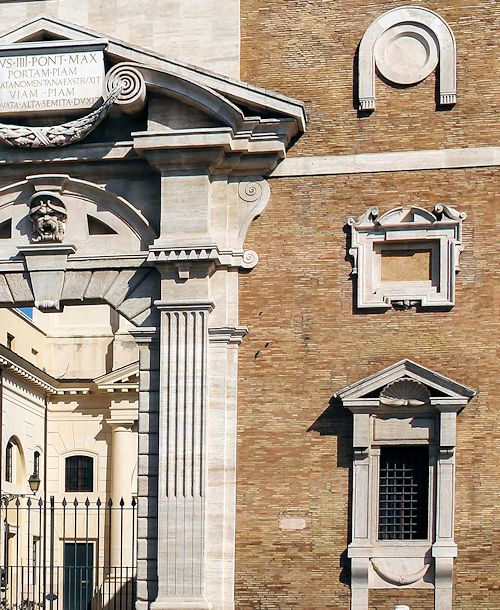history | not an easy book |
|
|
|
The diverse structural elements that surround the great door in the Porta Pia are superimposed for ornament as well as structure. It abounds in redundant and rhetorical superadjacencies of a kind of ornament that is "about" structure. The vulnerable edges of the opening are
protected by rusticated trim at the sides. Superimposed on the trim are pilasters that further define the sides of the door and support, together with the scrolled brackets above, the heavy complex of the pediment. This important opening is made eventful in the bearing wall by additional juxtapositions. The diagonal pediment protects the rectangular inscription block and the inverse segment of the sculptural garland which, in turn, plays against the curve of the semicircular relieving arch. The arch is at the head of a series of redundant structural spanning elements, including the horizontal lintel, which in turn relieves the flat arch which is a continuation of the rusticated trim. Brackets or corbeling, which decrease the span, are suggested by the diagonals of the top corners of the opening. The exaggerated keystone is superimposed on the flat-arch, the lintel, and the tympanum of the arch. In their complex relationships these elements are in varying degrees both structural and ornamental, frequently redundant, and sometimes vestigial.
|
In the almost equal combination of horizontal, vertical, diagonal, and curve they correspond to Sullivan's violently superimposed frames
around the bull's-eye window of the boxlike Merchants' National Bank in Grinnell, Iowa.
|
www.quondam.com/45/4506m.htm | Quondam © 2020.01.18 |


